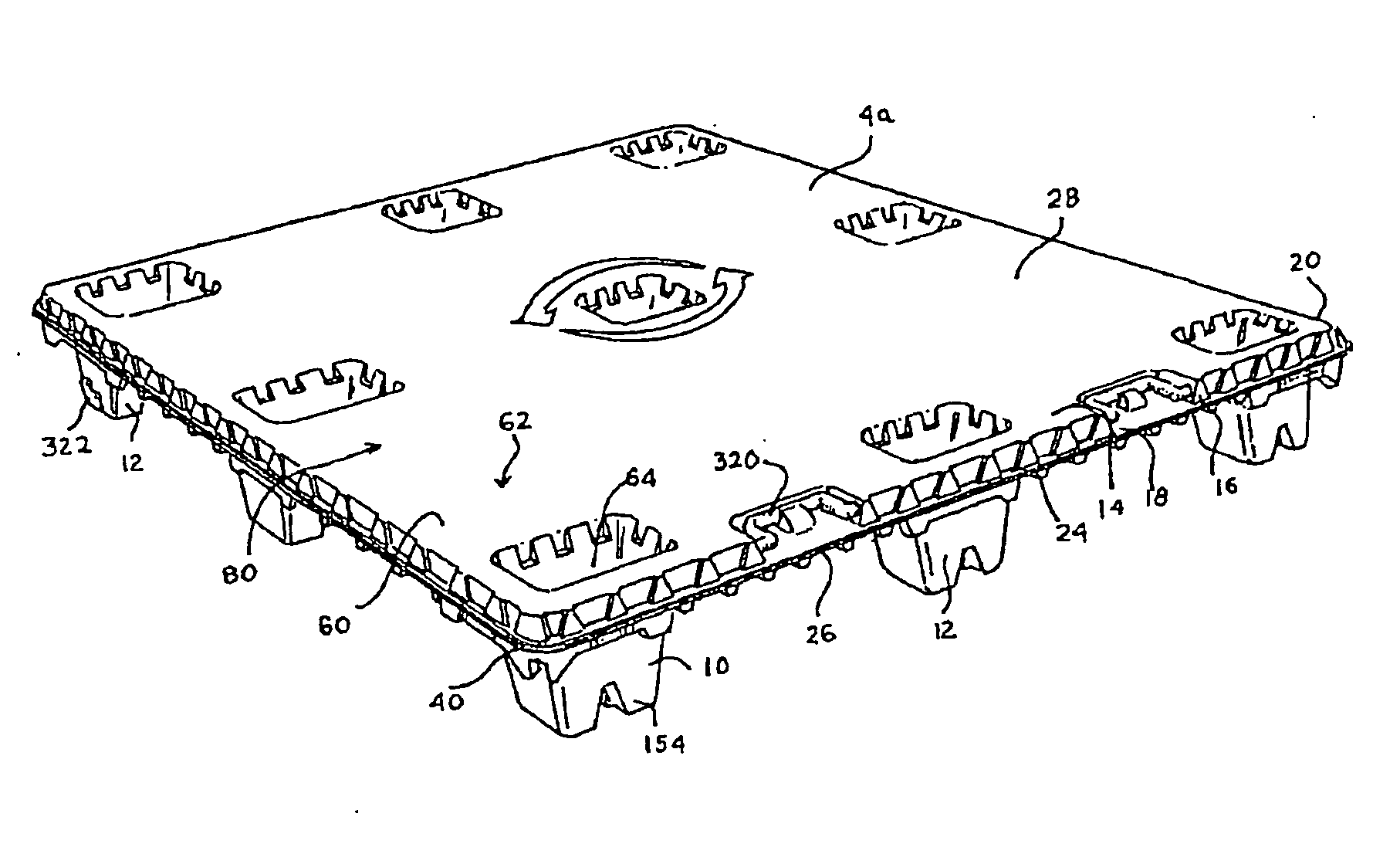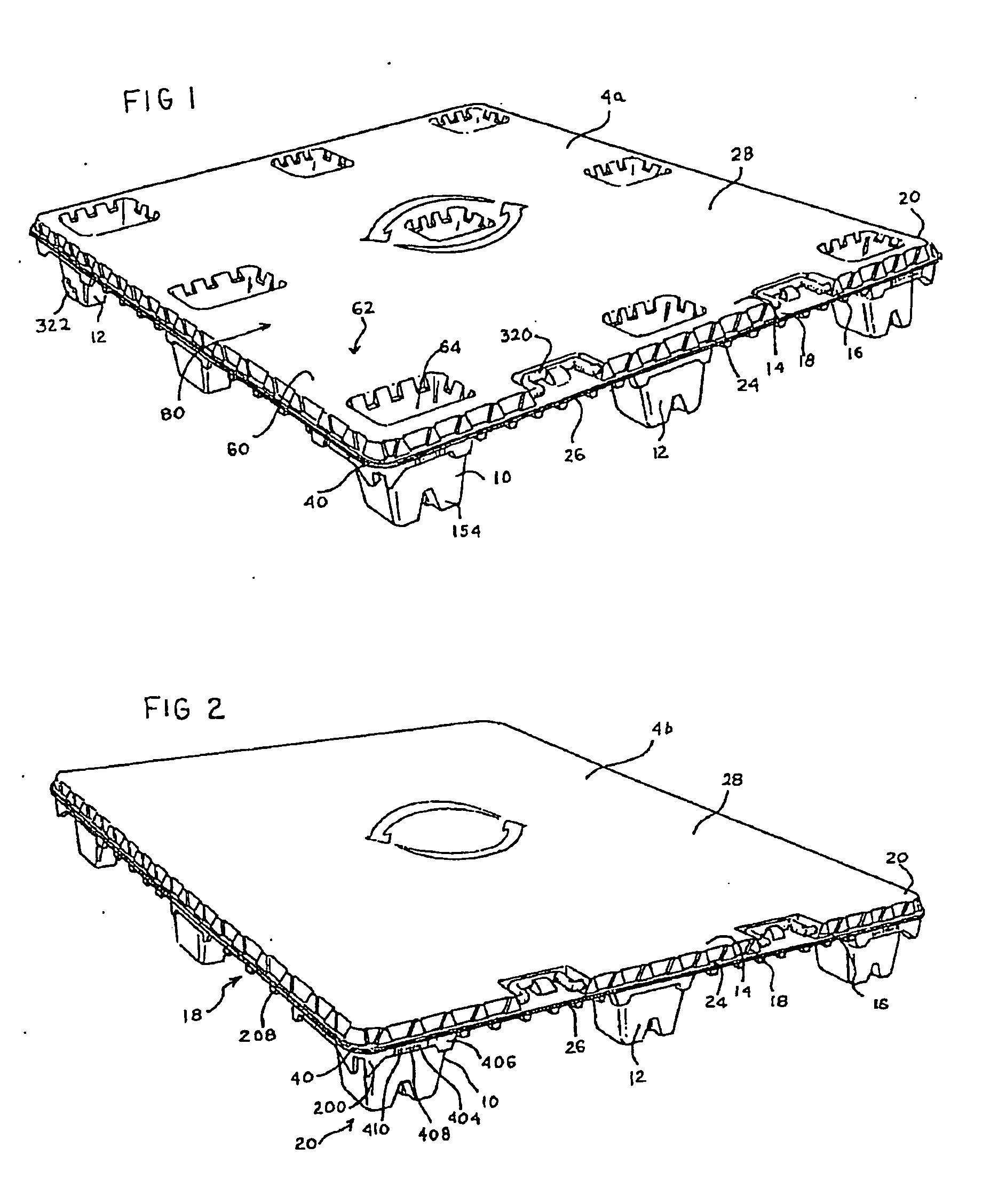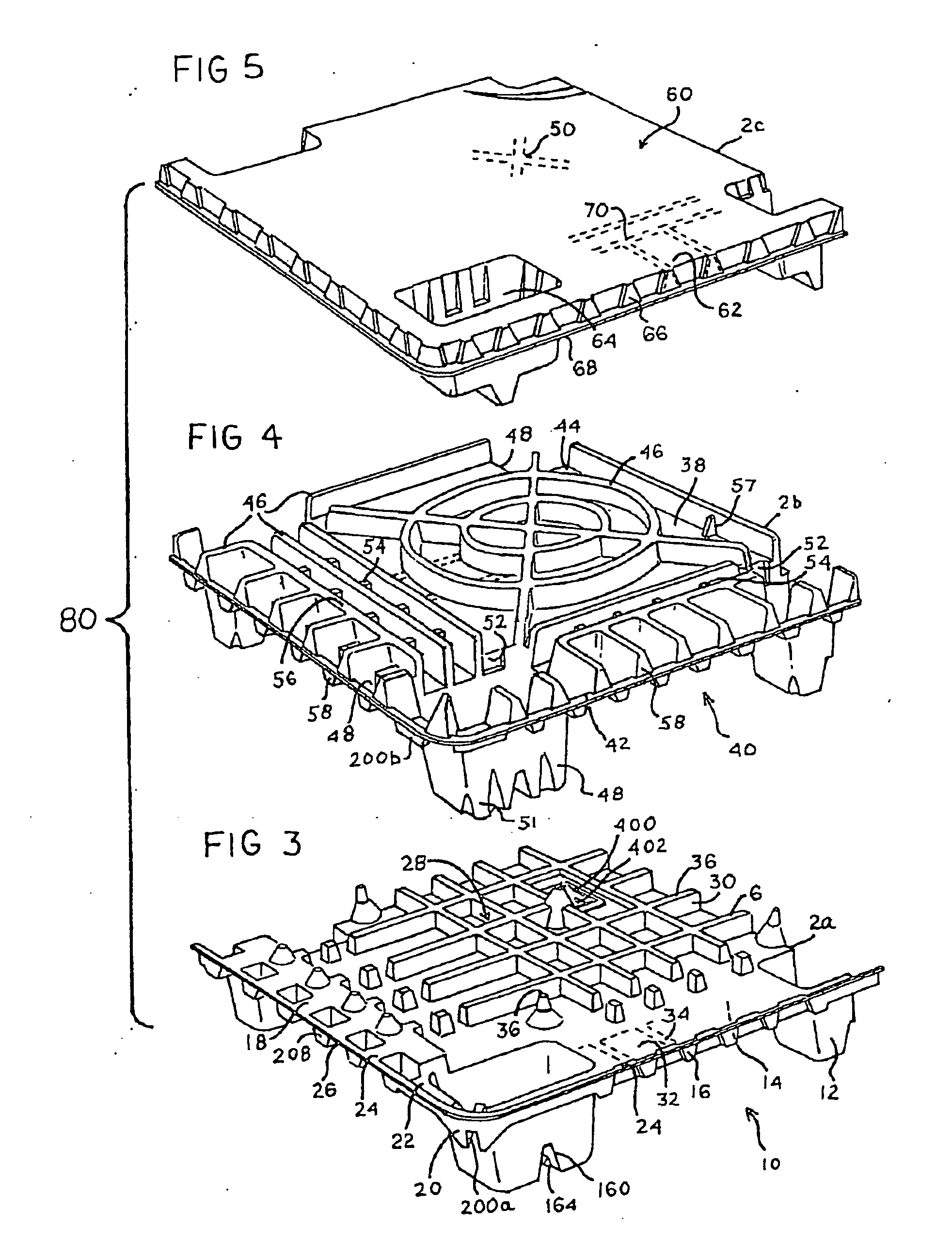Plastic pallets have a low market share however because they suffer from one significant
disadvantage in that they are considerably more expensive than a comparable wooden pallet.
Thermoplastic materials constitute a significant proportion of the total cost of a plastic pallet, and a given amount of relatively expensive plastic material is required to produce a pallet with a measure of load-bearing strength that is comparable to wooden pallets.
Each method characterized presents problems.
In the first methodology, an undesirable plurality of mechanical fasteners and molded elements are required.
In the second method, the load-
bearing surface of the platform has pockets forming the leg projections, which reduces the surface area available for supporting a load.
In the third method, where the two members are fused together, the arrangement is disadvantageously permanent.
These approaches are not satisfactory.
The
deck member of '052 would however be unsatisfactory for supporting loads without the reinforcing cross members because this structure would be considerably weaker than a
deck with a developed
surface structure.
Plastic pallets will not substitute wooden pallets on a large scale if plastic pallets create hazards that prevent a fire from being extinguished.
A plastic pallet that creates more fire hazards than a wooden pallet will necessitate
fire protection upgrades, including increased sprinkler systems and insurance premiums that could become very costly to the plastic pallet user.
The problem is that these resins are considerably more expensive than the commodity resins of the olefin group such as
polyethylene and
polypropylene, which are the preferred materials for constructing low cost plastic pallets.
A first problem with these methods is that the materials are relatively expensive as they are used throughout the article's resinous composition.
A second problem is the
resultant loss of the physical properties and general processability of the carrier resin forming the article.
Problems with
coating systems are that they require secondary
manufacturing operations and materials which can be expensive to acquire and apply and they would be subject to damage / removal in a rough pallet handling environment.
Although the Gordon approach may be useful in some applications, it would be difficult to implement the approach in a twin sheet pallet that would typically be under load.
Another problem being that an intumescent
system must be processable by the practitioner of
thermoforming methods.
In addition to causing damage to packaging materials and automated pallet handling equipment, these examples of deterioration also cause workforce injuries as a result of manual wooden pallet handling.
While plastic pallets eliminate these problems to a large extent and have been used to some
advantage because they do not deteriorate in the same fashion, it may be argued that plastic pallets remain nonetheless difficult to manually
handle by warehouse workers because of their heavyweight construction.
Pallets in the prior art have not been developed with ergonomic principles in mind.
Although these and other approaches provide some skid resistant protection they are disadvantageous in that they required additional material and or
processing expense in their original manufacture and eventual recycling.
Plastic pallets have not been adequately developed to interface with these and other packaging methods.
Although these arrangements are helpful, they do not allow the warehouse worker to manually and ergonomically initiate the starting stretch and cling of widely used packaging films around the pallet for final unitization.
The
disadvantage of initial price, however, is increasingly a more complex justification for selecting wooden pallets when compared to plastic pallets.
 Login to View More
Login to View More 


